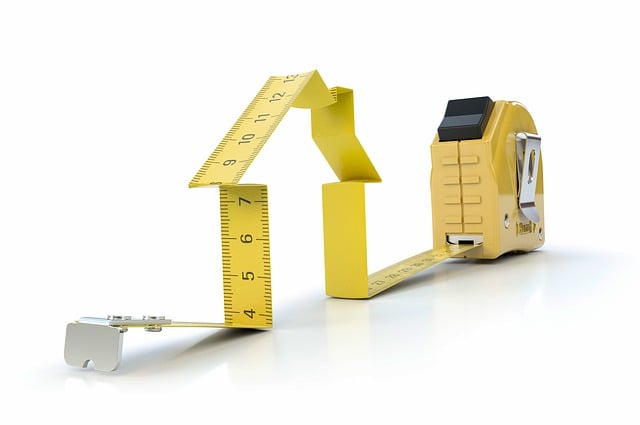Assessing material costs is a crucial step in home renovation, involving detailed research and planning. Gather quotes from multiple suppliers to understand market prices, which vary by quality, brand, and trends. Utilize online tools for initial estimates but account for potential fluctuations. Integrate these costs into your budget, considering quantity and project scope. Flexibility and informed decision-making based on cost estimators ensure a financially responsible and aesthetically pleasing renovation. Location, quality, and project scope significantly influence remodeling expenses, making a renovation pricing guide essential for effective budgeting.
Understanding material and labor costs is crucial for any successful home renovation project. This comprehensive guide delves into the intricate web of expenses that shape your renovation budget. From assessing material costs—including types, average prices, and location-based variations—to navigating labor expenses across trade professionals, subcontractors, and general contractors, we demystify renovation pricing.
Learn effective budgeting strategies, allocate funds wisely, and discover how to save on home renovation costs without sacrificing quality. Additionally, explore the world of renovation cost estimators, leveraging tools and apps for accurate project-specific quotes while considering their limitations. Master your renovation budget planning with these insights into remodeling expenses, ensuring an affordable yet impactful home upgrade.
Assessing Material Costs: A Comprehensive Guide
Assessing Material Costs is a crucial step in any home renovation project. It involves meticulous research and planning to ensure your renovation budget aligns with reality. Start by creating a detailed list of all materials required for your project, from flooring and fixtures to paint and appliances. Next, gather quotes from multiple suppliers to get an accurate picture of market prices. Remember, material costs can vary greatly depending on quality, brand, and current trends. Utilizing online renovation pricing guides and cost estimators can offer a good starting point, but be sure to factor in potential fluctuations for a more precise budget.
Once you have a comprehensive understanding of material expenses, integrate them into your renovation budget planning. Allocate funds thoughtfully, considering both the quantity needed and the overall project scope. Keep an eye on affordable home renovation options without compromising quality where possible. A well-planned renovation budget that accounts for potential surprises ensures a smoother process and helps prevent costly oversights during the upgrade.
– Understanding the impact of materials on renovation budgets
Understanding the impact of materials on renovation budgets is a crucial step in successful home renovation costs planning. Materials make up a significant portion of any remodeling expenses, and their prices can vary widely based on factors like quality, brand, and market demand. A thorough renovation pricing guide suggests that homeowners should allocate substantial time to research and compare material costs to ensure they get the best value for their money. This process involves assessing both traditional and innovative options, considering long-term sustainability, and balancing aesthetics with affordability.
A well-planned renovation budget accounting for materials should also incorporate flexibility to accommodate unexpected price fluctuations or design changes. Utilizing cost estimators can help homeowners gauge the typical range of home upgrade expenses for specific projects, enabling them to make informed decisions about which materials align with their desired outcomes and financial capabilities. This strategic approach ensures that the final renovation is both aesthetically pleasing and financially responsible.
– Types of materials and their average prices
When planning a home renovation, understanding the renovation pricing guide is crucial for managing your renovation budget planning. The cost of home improvements varies widely depending on factors like materials, labor, project scope, and location. For instance, simple upgrades like replacing fixtures or painting can range from $5 to $10 per square foot, while more complex projects such as kitchen remodels or bathroom overhauls can cost between $20 to $50 per square foot or more.
A renovation cost breakdown typically includes both material and labor costs. Materials, which account for about 40-60% of the total expense, include everything from tiles and appliances to plumbing fixtures and flooring. Popular choices like hardwood floors, granite countertops, and energy-efficient appliances can significantly drive up home upgrade expenses, especially in urban areas where materials are more expensive. Labor costs, on the other hand, cover the charges for contractors and their teams, making up the remaining 40-60% of the renovation budget. Skilled professionals can help ensure your project stays on track and within your set affordable home renovation budget.
– Factors influencing material costs (location, quality, quantity)
The cost of materials is a significant factor in home renovation projects, and several elements can impact this expense. One of the most critical considerations is location. Local market dynamics, supplier availability, and transportation costs can vary widely across regions, leading to disparities in material pricing. For instance, certain areas may have limited access to specific materials, driving up costs due to delivery fees or lower supply quantities.
Moreover, the quality of materials plays a substantial role in determining renovation costs. High-end, premium materials will inevitably be more expensive than standard options. This is where careful consideration of one’s renovation budget planning becomes crucial—choosing between cost-effective yet durable materials or splurging on luxury items that may extend the project timeline. Additionally, the quantity of materials required depends on the renovation scope and size, with larger projects often demanding more resources, thus increasing overall expenses.
Understanding material and labor costs is a crucial step in successful home renovation. By familiarizing yourself with the types and average prices of materials, along with factors that can impact them, you can create a robust renovation budget plan. Utilizing a renovation pricing guide and cost estimator tools will help break down expenses further, ensuring your project stays on track financially. With this knowledge in hand, you’re ready to navigate the process confidently, whether aiming for an affordable home renovation or a more substantial upgrade.
